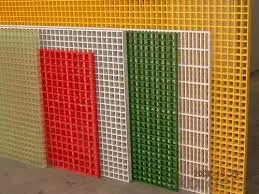
-
 Afrikaans
Afrikaans -
 Albanian
Albanian -
 Amharic
Amharic -
 Arabic
Arabic -
 Armenian
Armenian -
 Azerbaijani
Azerbaijani -
 Basque
Basque -
 Belarusian
Belarusian -
 Bengali
Bengali -
 Bosnian
Bosnian -
 Bulgarian
Bulgarian -
 Catalan
Catalan -
 Cebuano
Cebuano -
 China
China -
 China (Taiwan)
China (Taiwan) -
 Corsican
Corsican -
 Croatian
Croatian -
 Czech
Czech -
 Danish
Danish -
 Dutch
Dutch -
 English
English -
 Esperanto
Esperanto -
 Estonian
Estonian -
 Finnish
Finnish -
 French
French -
 Frisian
Frisian -
 Galician
Galician -
 Georgian
Georgian -
 German
German -
 Greek
Greek -
 Gujarati
Gujarati -
 Haitian Creole
Haitian Creole -
 hausa
hausa -
 hawaiian
hawaiian -
 Hebrew
Hebrew -
 Hindi
Hindi -
 Miao
Miao -
 Hungarian
Hungarian -
 Icelandic
Icelandic -
 igbo
igbo -
 Indonesian
Indonesian -
 irish
irish -
 Italian
Italian -
 Japanese
Japanese -
 Javanese
Javanese -
 Kannada
Kannada -
 kazakh
kazakh -
 Khmer
Khmer -
 Rwandese
Rwandese -
 Korean
Korean -
 Kurdish
Kurdish -
 Kyrgyz
Kyrgyz -
 Lao
Lao -
 Latin
Latin -
 Latvian
Latvian -
 Lithuanian
Lithuanian -
 Luxembourgish
Luxembourgish -
 Macedonian
Macedonian -
 Malgashi
Malgashi -
 Malay
Malay -
 Malayalam
Malayalam -
 Maltese
Maltese -
 Maori
Maori -
 Marathi
Marathi -
 Mongolian
Mongolian -
 Myanmar
Myanmar -
 Nepali
Nepali -
 Norwegian
Norwegian -
 Norwegian
Norwegian -
 Occitan
Occitan -
 Pashto
Pashto -
 Persian
Persian -
 Polish
Polish -
 Portuguese
Portuguese -
 Punjabi
Punjabi -
 Romanian
Romanian -
 Russian
Russian -
 Samoan
Samoan -
 Scottish Gaelic
Scottish Gaelic -
 Serbian
Serbian -
 Sesotho
Sesotho -
 Shona
Shona -
 Sindhi
Sindhi -
 Sinhala
Sinhala -
 Slovak
Slovak -
 Slovenian
Slovenian -
 Somali
Somali -
 Spanish
Spanish -
 Sundanese
Sundanese -
 Swahili
Swahili -
 Swedish
Swedish -
 Tagalog
Tagalog -
 Tajik
Tajik -
 Tamil
Tamil -
 Tatar
Tatar -
 Telugu
Telugu -
 Thai
Thai -
 Turkish
Turkish -
 Turkmen
Turkmen -
 Ukrainian
Ukrainian -
 Urdu
Urdu -
 Uighur
Uighur -
 Uzbek
Uzbek -
 Vietnamese
Vietnamese -
 Welsh
Welsh -
 Bantu
Bantu -
 Yiddish
Yiddish -
 Yoruba
Yoruba -
 Zulu
Zulu
cpvc and frp pipes combine durability and resistance.
Combining Durability and Resistance The Benefits of CPVC and FRP Pipes
In industrial applications and construction projects, choosing the right piping materials is crucial for efficiency, longevity, and safety. Among the numerous options available, CPVC (Chlorinated Polyvinyl Chloride) and FRP (Fiberglass Reinforced Plastic) pipes stand out due to their remarkable durability and resistance to various environmental factors. By understanding how these materials combine to offer enhanced performance, stakeholders can make informed decisions that lead to successful outcomes.
Understanding CPVC and FRP Pipes
CPVC is a thermoplastic material known for its high resistance to heat and chemical corrosion. Unlike standard PVC, CPVC can withstand higher temperatures, making it suitable for hot water systems and industrial processes involving aggressive chemicals. Its smooth inner wall reduces friction, thereby enhancing fluid flow while minimizing energy consumption. Moreover, CPVC boasts a sturdy structure that resists impact and abrasions, making it a reliable choice in demanding environments.
On the other hand, FRP pipes are composite materials made from a polymer matrix reinforced with fibers, typically glass. This combination results in a lightweight yet incredibly strong material. FRP pipes are resistant to a wide range of chemicals, moisture, and temperature fluctuations, which makes them ideal for various applications, including wastewater treatment, chemical processing, and oil and gas industries. Additionally, the non-corrosive nature of FRP leads to lower maintenance costs and longer service life, making it an economically viable option over time.
The Synergistic Advantages of Combining CPVC and FRP
When CPVC and FRP are combined in a piping system, the overall performance benefits become even more pronounced
. Here are some of the key advantagescpvc and frp pipes combine durability and resistance.

1. Enhanced Chemical Resistance While both materials offer considerable resistance to chemicals, their combination creates a system that can withstand even more aggressive substances. This feature is particularly advantageous in industrial settings where chemical exposure is a constant concern.
2. Temperature Tolerance The high-temperature resistance of CPVC complements the favorable thermal properties of FRP. This combination allows for effective use in applications involving temperature variations, providing reliability in both hot and cold environments.
3. Lightweight and Easy to Install One of the most practical benefits of using both CPVC and FRP is their lightweight nature. This characteristic simplifies transportation and installation procedures, reducing labor costs and project timelines.
4. Corrosion Resistance The inherent corrosion resistance of both materials means that a combined system will have a significantly prolonged lifespan. This reduces the need for frequent replacements, resulting in lower life-cycle costs.
5. Cost-Effectiveness Although the initial investment in CPVC and FRP pipes may be higher than traditional materials, the long-term savings in maintenance, durability, and energy efficiency far outweigh the costs. Over time, the return on investment becomes clear as facilities experience fewer disruptions and lower operational expenses.
Conclusion
In conclusion, the combination of CPVC and FRP pipes represents a compelling solution for various industrial applications and construction projects. Their individual properties of durability and resistance, when merged, create a versatile and robust piping system capable of meeting the most demanding requirements. Choosing this pairing not only ensures superior performance but also promises long-term economic advantages. As industries continue to seek materials that optimize efficiency while minimizing risk, CPVC and FRP pipes will undoubtedly remain at the forefront of innovative solutions in modern engineering. Embracing these materials could very well pave the way for safer, more effective piping systems in the future.









